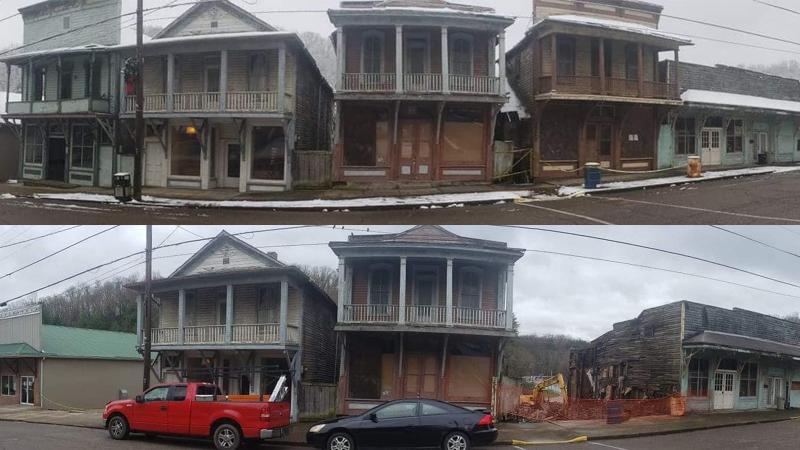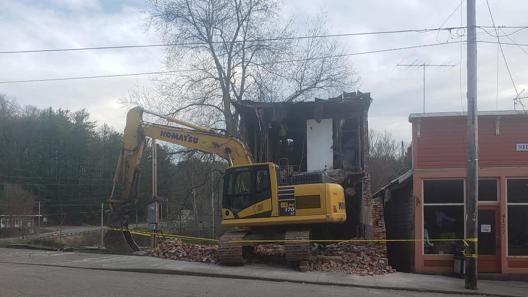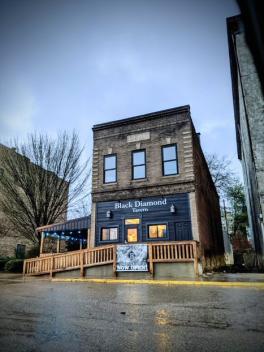
It has been a little over 30 years since Sunday Creek Associates (SCA) first sought out to foster positive change and development within Southern Perry County, and it’s been about 28 years since the name ‘Little Cities of Black Diamonds’ (LCBD) was taken up by the region as a symbol of their collective sense of place. Throughout this span of time, much has changed for folks here in how they relate to their shared history and environment as well as how they have gone about positioning both of these assets as the foundation for the future of development in their community. For three decades, Sunday Creek Associates has strived to honor the historical legacy of conflict inherent in a region bounded by global economic trends, corporate paternalism, labor struggle, and natural resource extraction. Rather than bury this provocative legacy, they have utilized it to create an authentic and reflexive sense of who they are and who they want to be in a world that is rapidly changing all around them.
As the effects of globalization, climate change, and now the Covid-19 pandemic continue to restructure local economies; community organizers and developers in the Little Cities of Black Diamonds region are finding that distinctions between rural economies and their urban counterparts have become blurred. Economic opportunities that have long been absent are increasingly more accessible. Outside interest in the region’s abundant environmental and cultural assets is at the precipice of a potential boom in the form of a burgeoning ecotourism industry, and it seems that years of trying to get folks outside of this region to see its potential is finally paying off.
However, as more capital investment and outside development enters into the scene in the LCBD region and as new places are deliberately layered into existing places, conflicts are bound to arise between the differing reality of how tourists experience place and how locals inhabit it. So, while the region continues to work tirelessly to create this sense of place for themselves, on the horizon sits the question: once this place is created, how do they keep it?
“I think the real challenge for all of us right now is to really keep our authentic assets to the front; our history, our struggle as a place and a community.” - John Winnenberg
* * *
In the early 1990’s when Sunday Creek Associates first began engaging in creative placemaking in the LCBD region, they found themselves confronted with a spectrum of challenges. These challenges included a basic lack of economic opportunity, crumbling infrastructure, a lack of a collective identity, a growing urban/rural divide and the rise of globalization, which threatened to leave rural places like Southern Perry County behind in a rapidly commercializing world. Another major challenge that required immediate attention was the aging demographic of local community members who were principal witnesses to the region’s historical relationship to the extractive industries.
John Winnenberg and Sandra Landis, co-founders of SCA, understood that the region needed to get organized if they were ever going to be able to collectively address these imminent and ongoing challenges. However, with a local history that was so defined by power imbalances between the local working class and the extractive corporations that employed them, John and Sandra set out to create an organizational structure that kept horizontal power sharing as a core value. Over the span of three decades, SCA has helped various local historical groups get established and begin the archival process. They’ve hosted countless events and programming for all ages that they hoped would bring the LCBD community together to engage their shared experiences.
More recently, SCA has been focusing more on building bridges with organizations like Destination Shawnee and the Buckeye Trail Association under a new group name, the Shawnee Trail Town Initiative. The goal of this collection of grassroot organizations is to sustainably develop the town’s appeal to eco-tourists by utilizing their environmental and historical assets. Meanwhile, as local organizations start preparing and mobilizing towards a potential regional boom in ecotourism, outside interest in the region’s potential in this industry are also on the rise. These outside interests bring with them the wealth, resources, and power to permanently construct their ideas into the social and physical landscape in ways local people simply cannot.
The Little Cities of Black Diamonds region possesses a long history of outside developers coming in when the markets start showing promise, and a longer history of them leaving when the same markets inevitably turn elsewhere. Ecotourism, in many ways, can offer grassroot solutions to the problems faced by struggling economies. However, it can also set in motion processes that reinforce existing class structures and risk becoming dependent yet again on a single, volatile industry.
Moreover, between the combination of the blossoming ecotourism industry and the predicted pandemic-inspired exodus of folks out of urban spaces and into rural ones, long-term residents might be forced to reckon with heightened financial strain and competition. The job market all across the country is increasingly insecure and the potential arrival of affluent newcomers will play a role in driving up the cost of living - a process that is exacerbated by increases in property taxes and the cost of land, homes, and rent in addition to basic goods and services.
“I try to play the video tape ahead though. It's like when the coal economy and the coal barons came to town - they built towns fast, there were all these new buildings, and there's all this hope, people got jobs. You know, people came from Europe here and started their life in America, but, over time, the story of labor and capital is not always a happy story.” - John Winnenberg
Appalachian Ohio has been at the mercy of boom-and-bust cycles for more than a century and it should not come as a surprise to anyone that the idea of a new industry sweeping the region yet again is a controversial concept. Many folks in the LCBD, including organizations like SCA, are acutely aware of the fact that they have always been stuck between a rock and a hard place when it comes to outside capital interests. This is a region that is in desperate need for any economic development, let alone the preferred kind - and yet there is a need to develop a plan that is inclusive of everyone in the community, though this is not always possible.
“You're comparing hardly any economy to one (hopefully diversified) sector of the economy that could be a building block for a better place to live and a better economy.” - John Winnenberg
* * *


What Sunday Creek Associates and other organizing bodies have accomplished in this region over the past 30 years is, in many ways, miraculous. They have helped to preserve their history and give it back to the people who live here. They have created a space for folks to come together, explore and process what this history means to them and what it means for their future. They have cultivated an authentic sense of community - the existence of which has certainly contributed to their increased levels of notoriety over the past few years as the fruits of their labor become more widely visible. This hard-fought construction of an authentic community is one of the strongest assets that this region possesses as more and more people from all over find themselves craving it.
Between its cultural strength and its abundance of environmental capital, The Little Cities of Black Diamonds presents itself as both a cure to folks in urban spaces who just spent more than a year in isolation as well as a preventative for the collective wave of climate change induced eco grief we are all just beginning to accept. This framing of the region is not necessarily new, and over the past few decades it has already led to an increased commodification of the land, history, and conceptions of local identity. Thus, the stakes are pretty high for Southern Perry County. At this moment in time, the LCBD region sits at a pivotal crossroads - one that indicates a fusion between the conflicts of the past and those of the future. If sustainable development is the goal, then a real challenge for the region moving forward is managing this balance between the need for economic opportunity and the preservation of 30 plus years of investment in bolstering community relationships, agency, and resilience.
“We're not going to have complete control over what happens when hundreds of people start showing up in a town of 5 or 600 people, you lose control really quick but, if we can keep our sense of who we are and tell our story and keep our authenticity and be about the Wayne Forest and about the diverse ecology around us and about the history of the community. If we can keep those things elevated to the point that that's who we are, we'll be a lot better off in 15 years.” - John Winnenberg
impact the future of Shawnee and community organizing.
